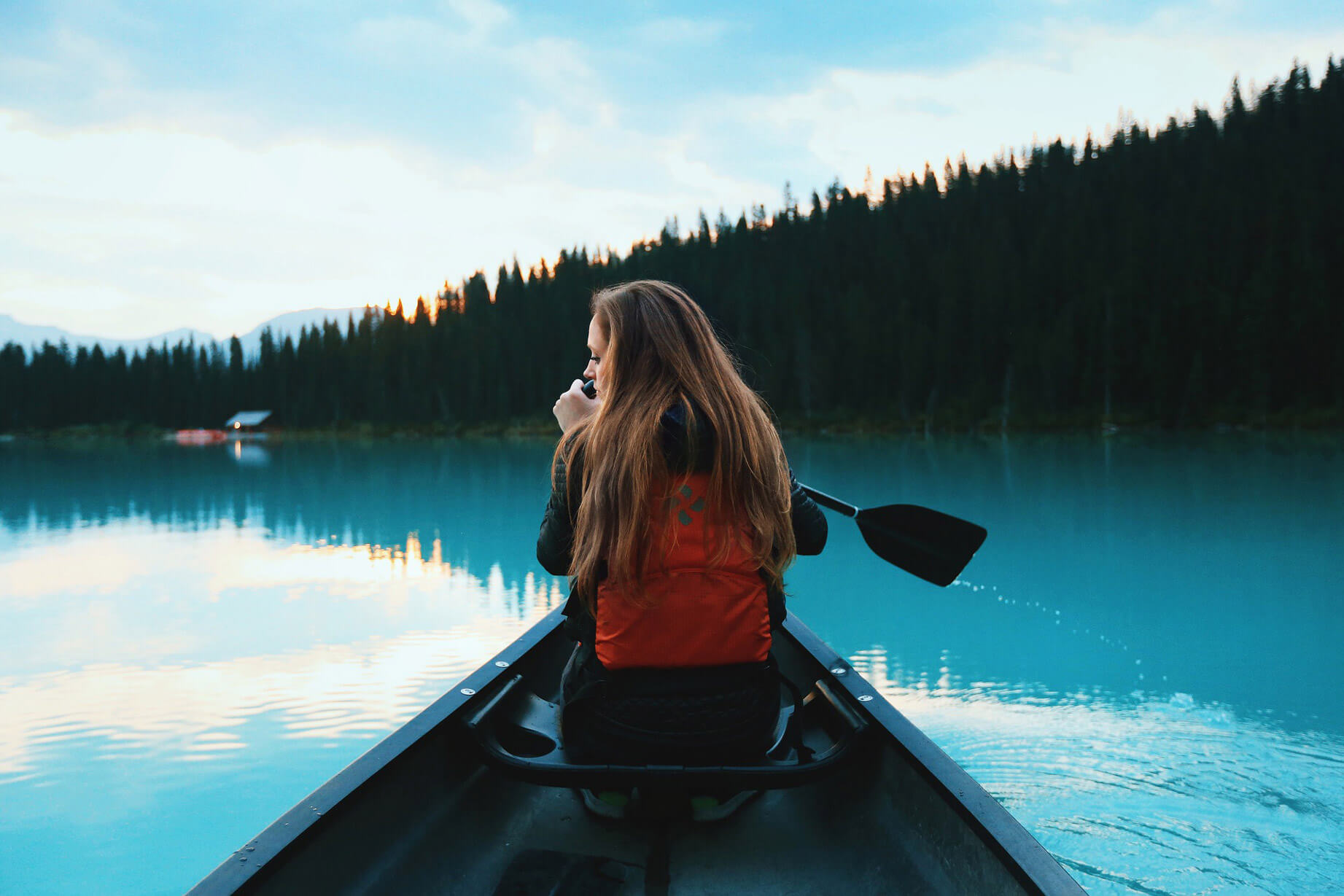With a Canadian canoe you move smoothly and relaxed over lakes and gentle rivers. This spacious canoe has plenty of space for baggage and for passengers – ideal therefore for a family excursion with a difference. Here, we have some tips and tricks for you for handling the light, maneuverable boot.
The Canadian is a lightweight, mostly open-top boat, where you sit or kneel to move forward with the aid of single-blade paddles. Canadians, like kayaks, are a type of canoe, and depending on model and design, have sufficient space for baggage and passengers. The classic Canadian is not so much sports equipment but is a means of transport. The possible loads depend on the length and width of the boat and on the height of the sides. You should bear in mind, however, that depending on the load, its handling properties can change significantly as it becomes less maneuverable.
Baggage should always be packed in watertight sacks or plastic containers and these should be lashed firmly in the boat.
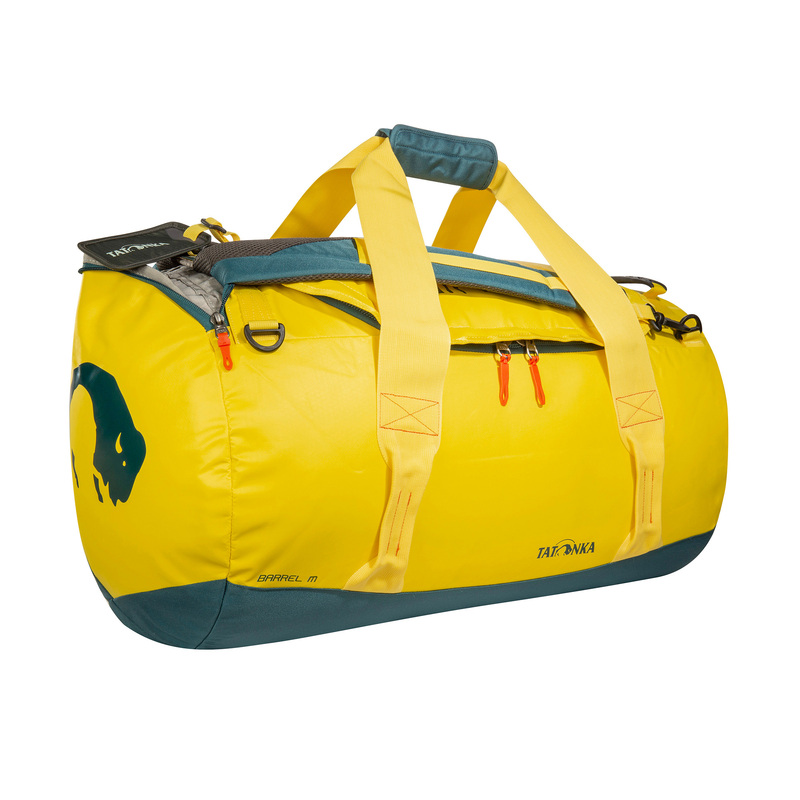
Our Barrel bags made of truck tarpaulin material: robust, waterproof and easy to clean.
Boat tours in the Canadian canoe: From relaxed to exciting
The Canadian is well-known and popular for its particularly good steering characteristics: It glides quickly over the water, holds course well and is to a large extent resistant to capsizing. Length, width and form of the hull play an important role – depending on the use, (one-man Canadian, two-seater, family boat or whitewater boat) the technical construction differs. The part of the canoe that lies beneath the water surface (the underside) determines the water resistance of the boat when paddling and therefore determines the speed. Especially on long periods on still or very calm waters, a boat with a long, narrow underside proves its worth, as it is propelled forward easily, with only a minimum of effort.
A short boat with curved keel line and flat bottom is suitable, for example, as a white-water boat and is naturally more maneuverable than a long boat with V-shaped or semicircular bottom, but this type on the other hand is better able to hold course. The Canadian should only have a keel if it is used exclusively on lakes: In this case it protects the bottom and makes the boat less sensitive to side wind. In running water, however, the keel can be a risk: it makes the Canadian harder to maneuver and the risk of getting stuck on obstacles under the water and then of capsizing, is significantly increased.
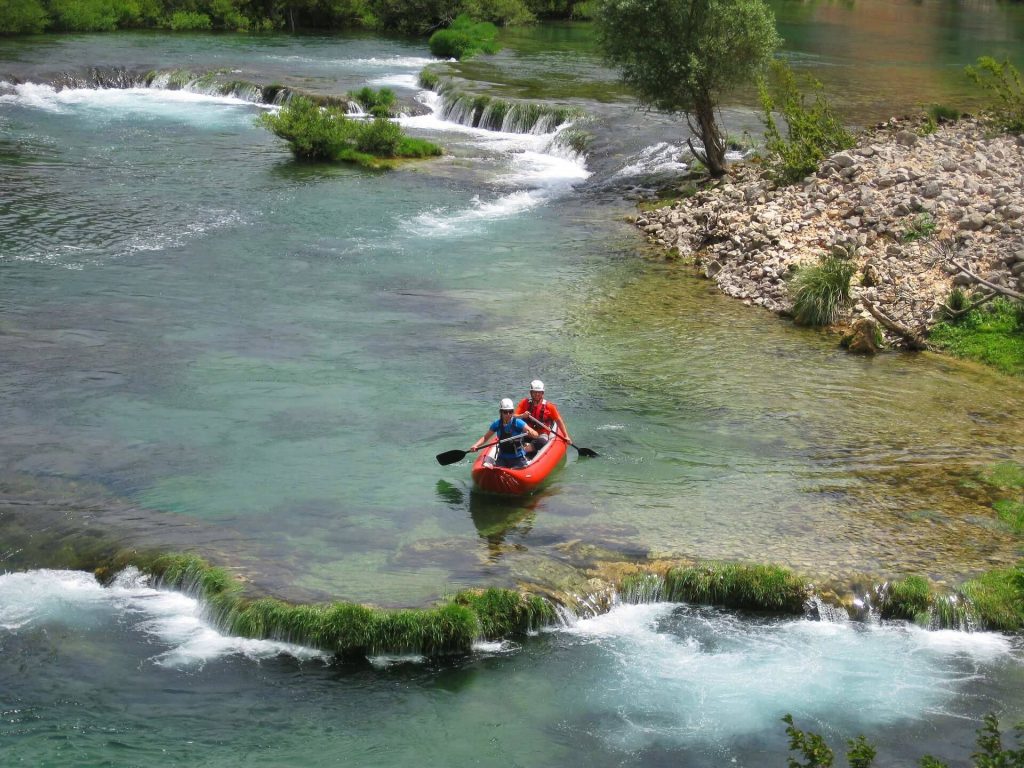
The width of the Canadian canoe and especially of its underside determines its stability against capsizing – an important factor for beginners and for families with children! The broader the boat and its underside, the flatter the bottom, the more stable is the vessel in the water. Some Canadian canoes have a flat V-bottom for a high level of stability; top maneuverability is a feature of the whitewater Canadians and fast touring boats because of their semicircular undersides.
Absolutely essential fixtures for a Canadian include floating bodies and ample catching loops in a robust material fore and aft on the canoe. In the event that the boat capsizes you must be able to take a grip of these easily. There should also be a rope attached to each of these catching loops of about four to five meters in length: With this rope you can hold the boat, tow it or if capsized, pull it back to land. Inside the boat, on the other hand, there should be no loose ropes because there is a danger that if it capsizes, you could get caught up in these and not escape from them in good time. The safest way is to keep ropes in a throw-bag – this has proved to be a life-saver, particularly in whitewater. The throw-bag is equipped with a long, heavy-duty floatable rope; it floats and is usually in neon colors. Persons whose boat has capsized can be saved with a throw-bag, simply by throwing it to them.
Also interesting: Canoeing in Dalsland – Paddle tour through the Swedish water world
Canoeing is not difficult but it needs practice
The paddling technique in the Canadian is clearly quite different from the “double paddle technique” in a kayak: In principle paddling is on one side so that fitful paddling through changing the side for the strokes does not disturb the balance of the boat. In the two-man canoe the bowman and the sternman each paddle on opposite sides; here the seat benches enable adjustable sitting positions for each man to paddle comfortably on either side. In the Canadian canoe each man takes over one side in order to avoid fitful and uncontrolled steering that could lead to the boat capsizing. The stern paddler has the best view so he is the one to give the commands.
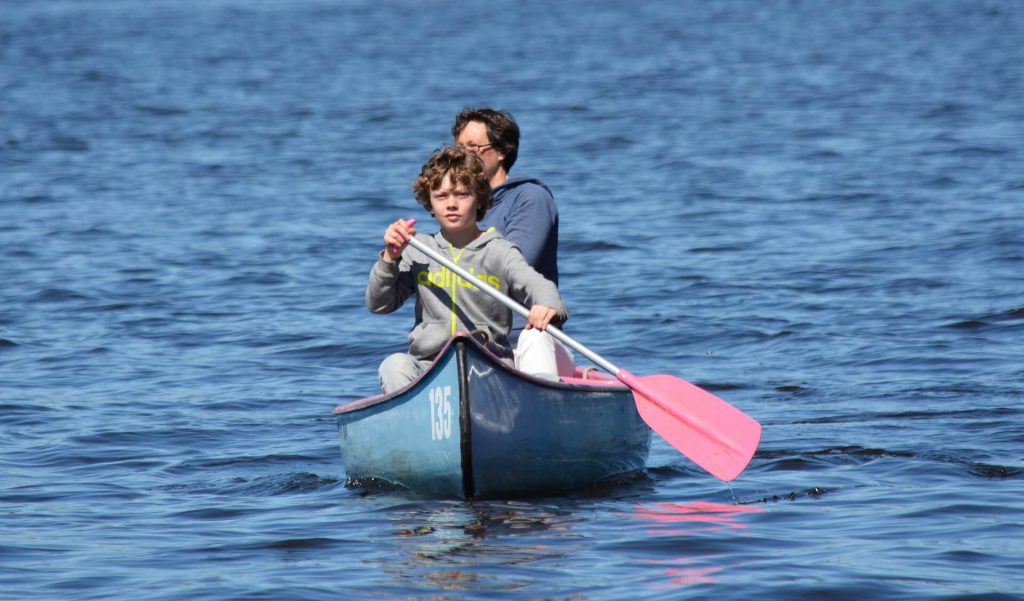
Basics for handling the Canadian canoe
First the stern canoeist (the captain) gets in then the front man climbs
in and makes sure he is stable. The stern canoeist then pushes the boat
away from the bank using the paddle. (He is also always the last to
leave the boat.) Taking up your position in the Canadian is not actually
“sitting down” in the true sense of the word: The canoeist kneels in
the boat with knees spread apart and in the direction of travel with his
bottom resting on the seat for support. In this way he is in closer
contact with the canoe, can hold a secure position and benefits from the
lower center of gravity. Moreover, this position means that the reach
of the paddle is greater. In calm water, however, you can make yourself
more comfortable and sitting is also okay.
Know-how: Paddling technique
In the single blade paddle technique the paddle is held upright and enters the water and is also drawn through it as vertically as possible to the surface of the water. With this technique the paddle must always be held tightly at the shaft and the grip; the span is ideal when the paddle forms a right angle to the outstretched arms. Whilst paddling, the torso is bent slightly forward, the arms remain stretched. The paddle is drawn backwards through the water close to the boat; the torso supports this movement by slightly leaning backward. The hand on the shaft exerts only slight pressure that then increases as the paddle is drawn through the water. In the Canadian canoe you can save your energy by making the paddle strokes evenly and with the support of torso movement.
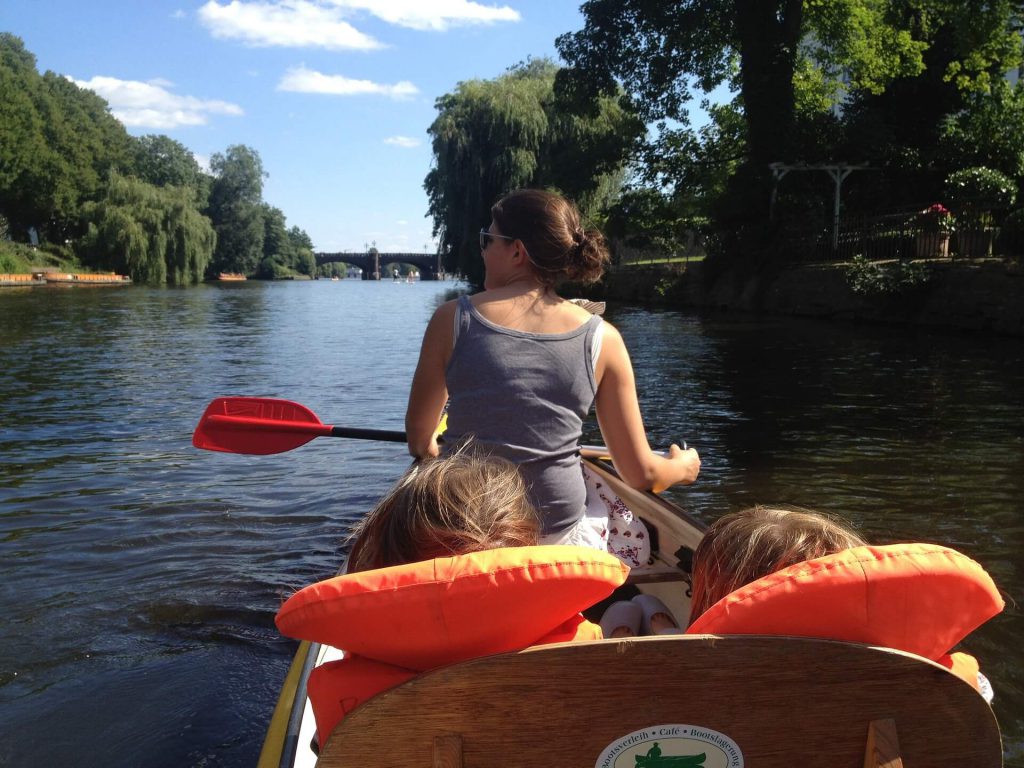
Small but mighty: Special paddle strokes enable even forward movement
In the Canadian you should avoid using the paddle alternatively on the right and left side. The J-stroke helps to keep the Canadian canoe on course: This basic stroke ends with a slight curve away from the boat. With a rotation movement the Canadian canoe can be propelled with the sweep stroke: The paddle is moved towards the boat in a sweeping movement; in a two-man Canadian the strokes are on both sides. In order to avoid obstacles in the water the steering stroke is used whereby the paddle is put into the water about half a meter away from the boat and drawn towards the boat with the blade at an angle.
Caution:
– Pay attention to the height of the seat: It should be possible to get out easily at any time. If your legs get hooked under the board, then in the event of capsizing this is life-threatening!
– Even in difficult passages you should never take hold of the sides of the boat – this can only lead to capsizing. Your hands should always be on the paddle and the paddle should always be in the water. This is the only way that you can keep your balance. A life jacket and a fixed spare paddle belong to the essential equipment!
Tip: Outdoor vacation in Soča Valley in Slovenia – For outdoor enthusiasts Soča Valley is heaven on earth
– You should in all circumstances learn how to estimate the water passages correctly: Darkness, floodwater and overhanging trees, as well as low bridges, mill canals and weir systems can bring canoeists into mortal danger.
– Canadian canoes are very sensitive to wind – on a lake even a gentle wind can be dangerous. For this reason on lakes you should always stay close to the shore and already when planning your canoeing trip you should exclude large lakes. In a wind the center of gravity of the Canadian should be towards the front and you should sail crosswise to wind and waves.

Emergency situation on the water: The right way to behave if the boat capsizes
If the Canadian has capsized, you should try to take hold of the boat and paddle, pulling both towards you. The boat should float in front of you so that it can absorb the shock of a collision with rocks and boulders. The person in the water should hold on to the stern catching loop and try not to get in front of the boat, otherwise there is increased danger of getting squashed in and injured. Under no circumstances, however, should you tie the paddle to your body or to the boat.




